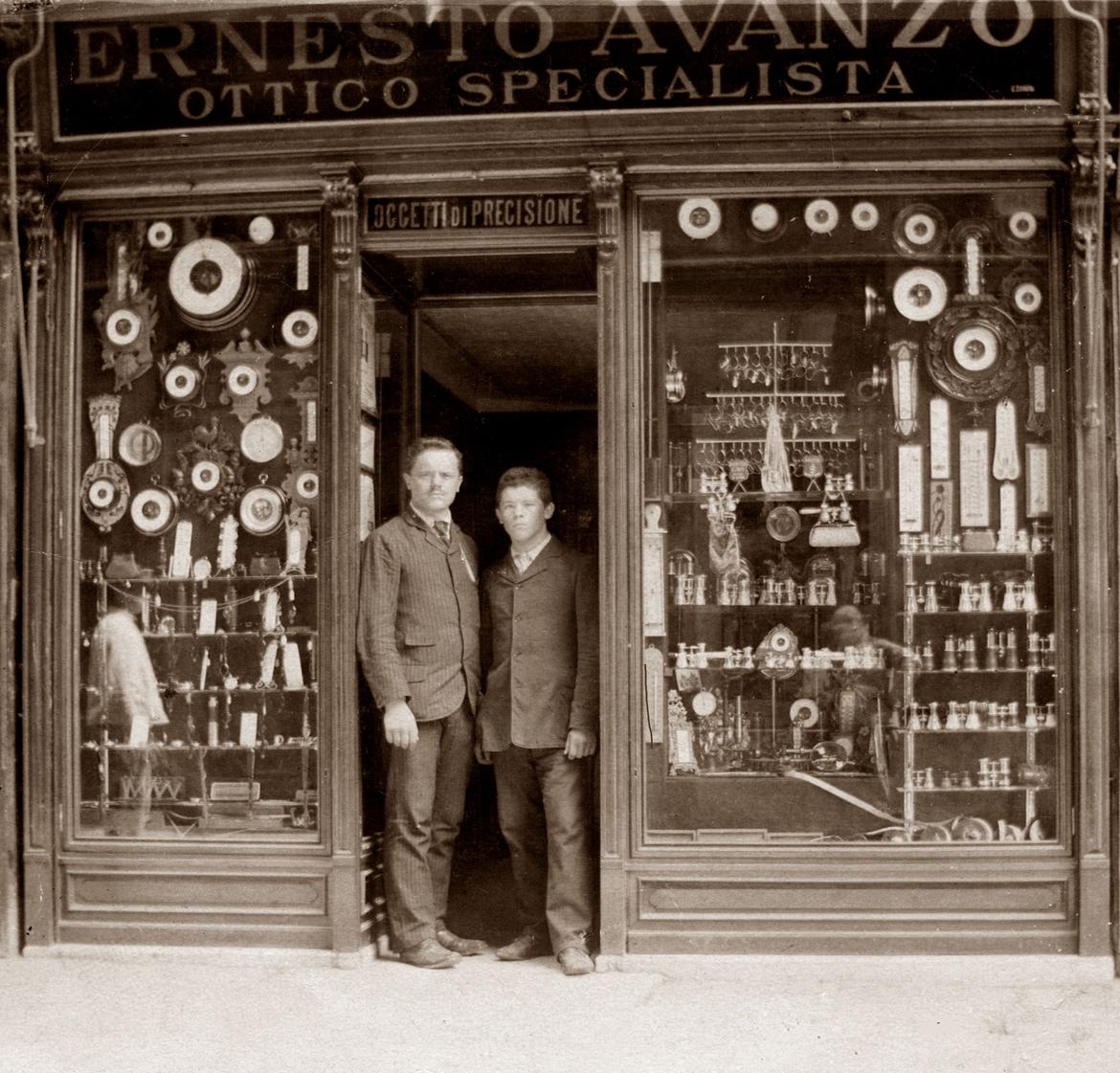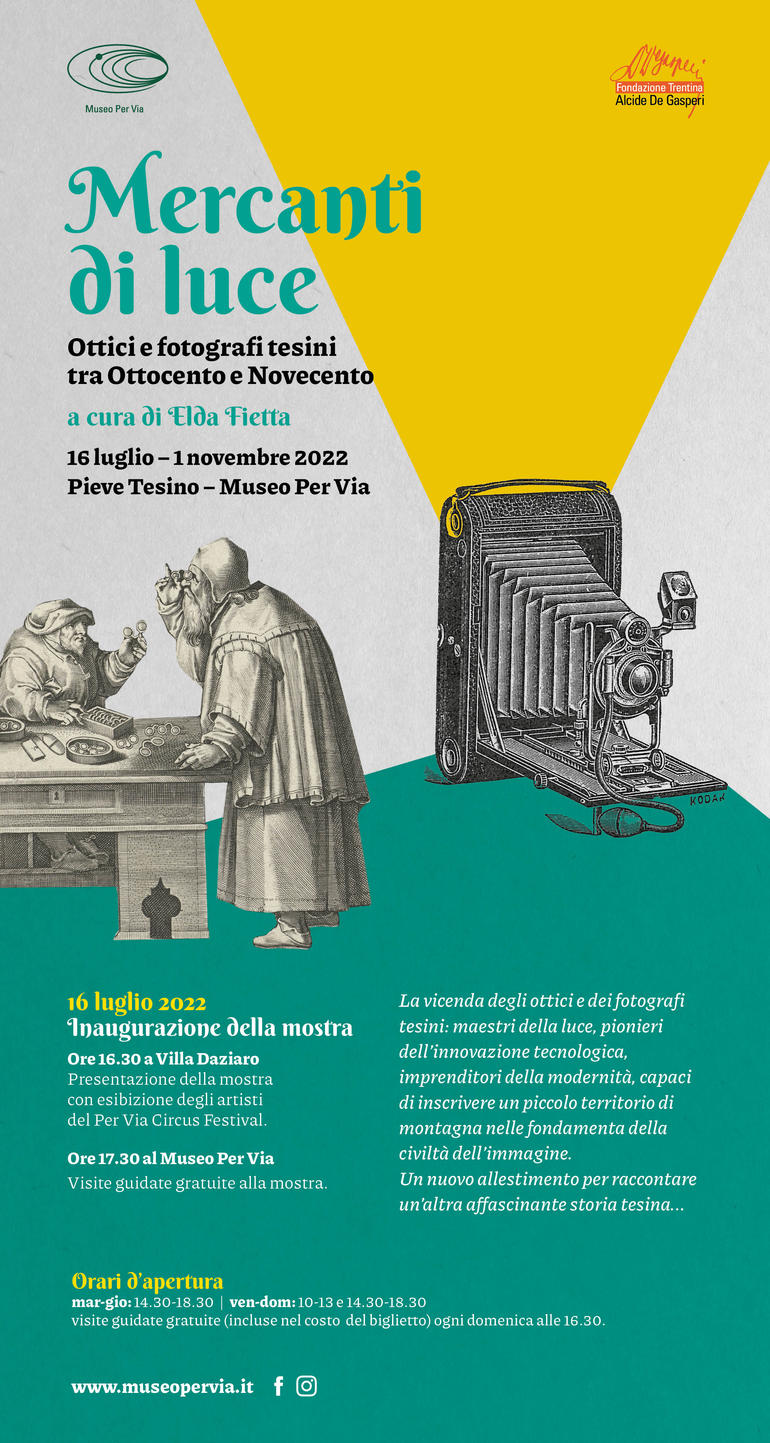Merchants of Light. Opticians and photographers from Tesino between the nineteenth and twentieth centuries.

A story within history, which has remained almost unknown until now, although by crossing the ages it has come to the present day still alive and vital. It is the story of the opticians and photographers from Tesino: masters of light, pioneers of technological innovation, entrepreneurs of modernity, who succeeded in including a small mountain area in the foundations of the image civilization.
Through a very rich selection of more than 100 documents and photographs, and thanks to the fascination of antique cameras, sight-measuring instruments, barometers and extravagant period equipment, the exhibition accompanies us on the routes of the first Tesino print sellers who began to engage in the eyeglass trade: an ancient product that got great fortune and diffusion in the modern age.
By selling print stamps they travelled all over Europe, from Spain to Russia, from Italy to the Nordic countries, in order to reach then the Americas, the Northern Africa and Asia. In the second half of the Post-war Period the figure of the Tesino street vendor disappeared gradually from many Italian and foreign villages and towns. But many of them, since the end of the 18th Century, had been opening flourishing shops in the main European towns or had even started their own editorial activity - there is a lot of evidence left to us. The same happened later for optical dealers and this brought a breath of prosperity also to the valleys.
The exhibition thus invites visitors to take a journey into technological innovation by crossing two centuries, to reach the present day: in fact, while print sellers ceased their activities at the beginning of the 20th century, some families of opticians and photographers of Tesino are still a point of reference for a loyal clientele today. This is the case with the Braus family of Arco and the Buffa family of Klagenfurt, not to mention the Gecele family of Trento and the Avanzo family of Trieste, whose stores have recently been sold, but still retain their name. They are evidence of a history that renews itself but does not forget its roots.


